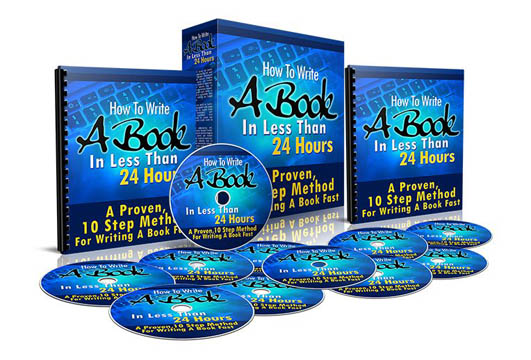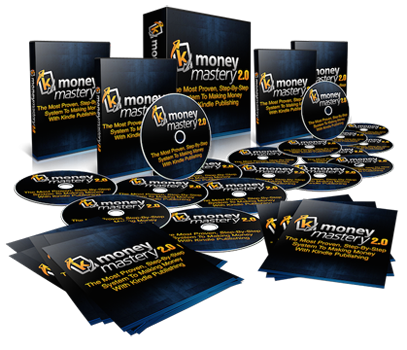|
Consider Self Publishing in Ebook FormatToday, more than ever before authors are presented with publishing opportunities that have never existed before. This is not to understate the hard work that authors have to go through to get recognition, write great books, and make a full time living from their passion of expression. However, it is to say that today, due to advances in communications technology, authors can now get their books distributed much easier than they could a decade ago. One very popular way that authors are distributing their work is digitally through ebooks. Digital books are gaining so much popularity that even some of the most popular authors in the world have used it to distribute their books. Stephen King for example published Riding the Bullet exclusively in ebook format. When this ebook began distribution over Barns and Nobel and Amazon.com there was so much demand for the download that the servers of these two book giants slowed down almost to a halt. People that wanted to download the ebook were put in a large queue with the hundreds of thousands of other who downloaded the ebook as well. It is not only big name authors that are finding success in ebooks. We at Ebook Architect have been helping authors create, market and sell their ebooks online for years now with great success. Many of these people are first time authors and are often amazed with the success of their ebook sales. Below are some of their ebook writing tips. Do not underestimate the power of the Ebook Ebooks are still looked upon as unpopular by many authors who have not yet taken the time to learn about the success within this industry. For example, while the traditional publishing industry growing at the sluggish rate of 5% a year the digital publishing industry is growing at rates between 30% -50%. This means that the opportunities within the publishing industry are growing at a fraction of the rate that opportunities within the digital publishing industry are growing. To set up an ebook you do not need to be a tech wizard Setting up your ebook from the idea conceptualization stage to the selling stage ca not be completed overnight but it is definitely something that can be done by anyone regardless of your technological background. If you can use a word processor then you can create and sell an ebook online. While it is recommended you set up your own website, it is not necessary. There are outlets such as amazon.com, EBay and Lulu.com to name only a few sites that allow you to post your ebook on their servers. Setting up an Ebook site is virtually costless and you keep 100% of the profits With traditional publishers you will be lucky to see 10% of the profits from your book. With ebooks however, you keep 100% of the profits minus the fees required to set up the site which are minimal. Here is the fee breakdown for ebooks vs traditional books Ebook vs Book cost Rights and profit With the above examples it is easy to see that for first time authors ebooks make a lot of sense. The risk associated with publishing an ebook is much lower than it is with distributing a soft or hard cover book. Likewise, as an ebook author you will keep virtually all of your own profits. If nothing else, it is something worth consideration. Ebooks may not replace traditional paperback books, but they certainly are gaining popularity at a rate that should make all authors stop to think about how they could use ebooks to their advantage. A First Time Authors Publicity Kit Material TipsIf you are a new author that has been requested to send publicist materials, you may feel left in the dark on what to send. Here is a list of the usual items. 1. Author Bio 2. A photo 3. Interviews 4. Reviews 5. Promotional Items As time goes on, you will expand your PR kit. A great idea is to have a press kit right on your website to save editors time and money. You may want to have all your current materials in one easy to download PDF file. Each time you have something new to add update the file. 7 Keys to Writing a Children's Book that Sells Like HotcakesThere are seven fundamental reasons that some books succeed and others collect dust on the authors bookshelf. These seven keys to success as an author are simple, obvious even, and yet in the midst of our writing many of us forget them. We get so focused on the idea of the book that we forget the mechanics. Here is the strategy that award winning authors use. 1) Create a hero that your audience can relate to. Examine your target market honestly. Who will be reading your book? Just because you think that your main character is funny, charming and brilliant does not mean that they will or even that that is what they care about. 2) Write for your audience, not your high school English professor. There has already been a Shakespeare. Most genres do not require you to write like him. You will just turn your audience off if you write at a level beyond their comprehension. 3) Give your reader a problem that he or she can empathize with. Ex. Are you writing for teenage girls? Then something to do with the pains of adolescent romance, or lack thereof, might be a good start. 4) Provide a nemesis that makes sense. The antagonist in your story should appear to be everything that your main character is not. Then go back in and give him or her some good qualities as well. People are not good or evil. Your characters should have the same character traits, as the rest of humanity. Ex. A Thief with a Conscience or who hates everyone except his little sister, who he has taken care of since their mom died. Give all your characters depth. 5) Provide obstacles for your main characters. Both your hero and antagonist need to have a few bumps in the road. Life is not smooth. Let them both screw up and figure their way out of their messes. 6) Your hero, at the very least, must learn a lesson about himself or herself. Is he braver than he thought he was? Is her nerdiness actually an asset? Your characters should have some type of self-realization. It can be subtle. You do not have to go into a five chapter monologue on it, just give the readers some clues that he or she has changed. 7) Begin and end your story with a bang. Grab your readers attention in the beginning and have them hoping for a sequel in the end. The rest, no matter how much work you put into it, will probably be skimmed until they hit the next seat gripping scene. Your job is to make that skim time as short as possible. A Guide to Creative Writing That SellsIt is unbelievable that with all the creative writing courses out there, that no one teaches the necessity of researching your market before you set pen to paper. Yes, we all want to be creative and let our imagination go. At the same time, would it be great to have some of your work published? Even better wouldn it be awesome to know that you have upped your chances of getting published by around 80% by simply doing a tiny bit of browsing in a library or bookstore? Here is a way to make sure that there is an interest in your type of story before you pick up a pen or pull out your laptop: 1) Go to the local bookstore and read the writing magazines. Editors actually tell these magazines what they are interested in, in a fairly timely manner. Most of the guess work is taken out for you. You know which editors are looking for what type of stories. 2) Look at the current Writers Guide. It is filled with editors and publishers looking for fresh material. And guess what? They also tell you what each editor wants and what they are sick to death of. 3) Check out the bookshelves to see which childrens books are featured. Is there a trend or pattern? For example the last few years Harry Potter, Artemis Fowl and Charlie Bone have all been hot. It does not take a brain surgeon to figure out that magical characters have taken kids and editors by storm. 4) Ask kids what their favorite books are. Ask them why they like one over the other. Ask if their friends are into the same books. Model these themes. There is no need to make over the wheel or hire a psychic to figure out what publishers, editors and your audience, kids, are looking for. Gather this information and apply it to your writing. Watch the number of your submissions rise, while your rejection letters become few and far between.
|


